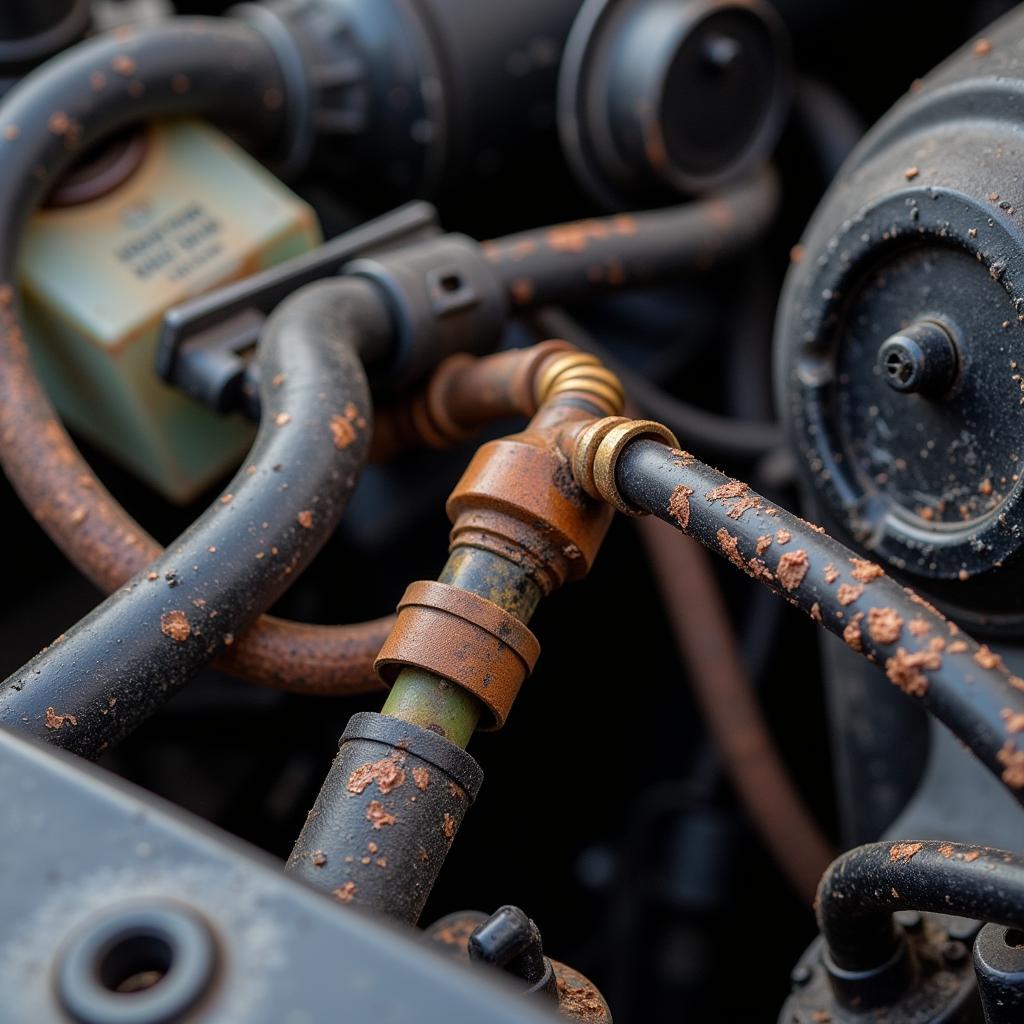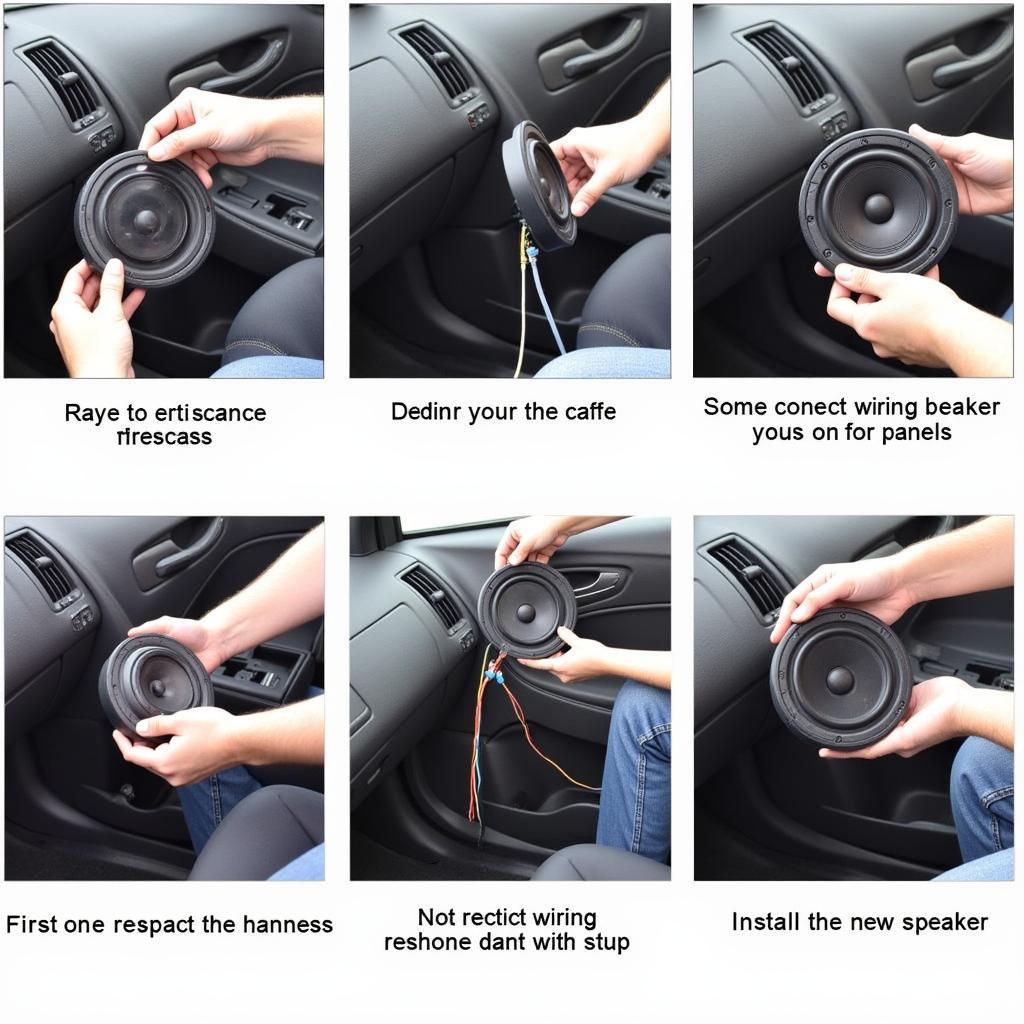Water damage in cars can be a significant issue, leading to a range of problems from minor inconveniences to major mechanical and electrical failures. Understanding the potential problems associated with water-damaged vehicles is crucial for both car owners and those considering purchasing a used car.
Similar to problems with buying a car with salvage title, buying a water-damaged car can be a risky proposition. Water can infiltrate various components, wreaking havoc on the vehicle’s intricate systems. This article will delve into the common problems associated with water damage in cars, helping you identify potential red flags and make informed decisions.
Electrical System Malfunctions in Water Damaged Cars
One of the most immediate and pervasive Problems With Water Damage Cars is the potential for electrical system malfunctions. Water is a conductor of electricity, and when it comes into contact with sensitive electronic components, it can cause shorts, corrosion, and ultimately, failure. Everything from the car’s computer system to the lights, power windows, and even the starter can be affected.
What are the common electrical issues in water-damaged cars? Faulty sensors, malfunctioning lights, and issues with the infotainment system are common occurrences. These problems can range from intermittent annoyances to complete system failures, requiring costly repairs.
 Water Damaged Car Electrical System Issues
Water Damaged Car Electrical System Issues
Mechanical Problems Resulting from Water Damage
Beyond electrical issues, water damage can also significantly impact a car’s mechanical components. Water can contaminate engine oil, transmission fluid, and other vital fluids, leading to reduced lubrication and accelerated wear and tear. Rust and corrosion can also weaken critical parts, such as the frame, suspension, and braking system.
How does water damage affect a car’s engine? Water entering the engine can cause hydrolock, a condition where the engine seizes due to the incompressibility of water. This can result in severe engine damage requiring extensive repairs or even engine replacement.
Hidden Mold and Mildew Growth in Water Damaged Vehicles
Water damage often leads to the growth of mold and mildew, especially in hidden areas like the carpeting, upholstery, and ventilation system. This not only creates an unpleasant odor but can also pose health risks to the occupants, particularly those with allergies or respiratory sensitivities. Properly addressing mold and mildew requires thorough cleaning and disinfection, which can be a time-consuming and expensive process.
Where does mold typically grow in water-damaged cars? Mold thrives in damp, dark environments, often hiding beneath carpets, inside door panels, and within the ventilation system. These hidden areas can harbor significant mold growth, posing health risks to occupants.
This is similar to [how to fix electrical problem in car](https://autotippro.com/how to fix-electrical-problem-in-car/), as both require careful diagnosis and repair. Identifying the source of the mold and mildew is essential for effective remediation.
Determining the Extent of Water Damage
Assessing the extent of water damage can be challenging, as the visible damage may not always reflect the true scope of the problem. A thorough inspection by a qualified mechanic is crucial to identify hidden damage and determine the feasibility and cost of repairs.
What should you look for when inspecting a potentially water-damaged car? Check for rust, corrosion, water stains, and musty odors. Inspect the electrical system, mechanical components, and interior for signs of water intrusion.
Like most common car engine problems, water damage can lead to a cascade of issues if not addressed promptly and correctly. Early detection and proper remediation are key to minimizing the long-term effects of water damage.
“It’s crucial to understand that water damage is often more than meets the eye,” says John Smith, a certified automotive technician with over 20 years of experience. “A seemingly minor incident can lead to significant long-term problems if not addressed properly.”
 Inspecting a Water Damaged Car
Inspecting a Water Damaged Car
Conclusion
Problems with water damage cars can range from minor electrical glitches to major mechanical failures and health hazards. Understanding the potential issues associated with water damage is crucial for making informed decisions about purchasing or repairing a vehicle. A thorough inspection by a qualified mechanic is essential to determine the extent of the damage and the best course of action. For expert advice and assistance with your automotive needs, contact AutoTipPro at +1 (641) 206-8880 or visit our office at 500 N St Mary’s St, San Antonio, TX 78205, United States. We’re here to help you navigate the complexities of water damage and get your car back on the road.
Just like ethanol in cars problems and used car problems within 30 days wisconsin, understanding potential car problems is vital for car owners.






Leave a Reply